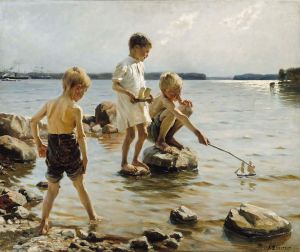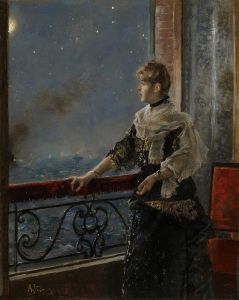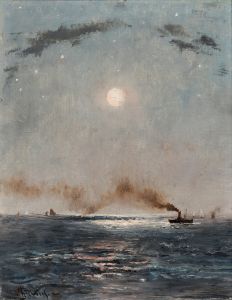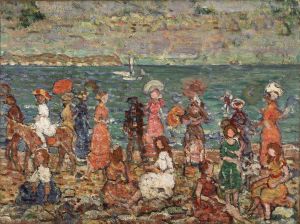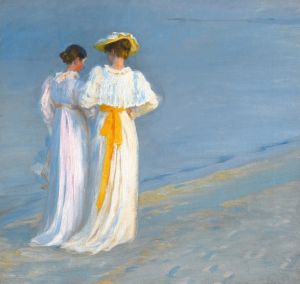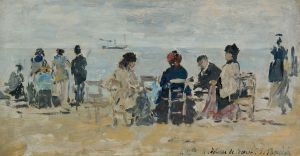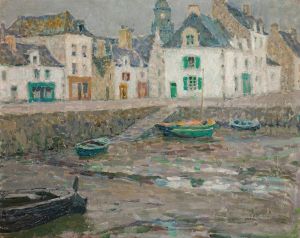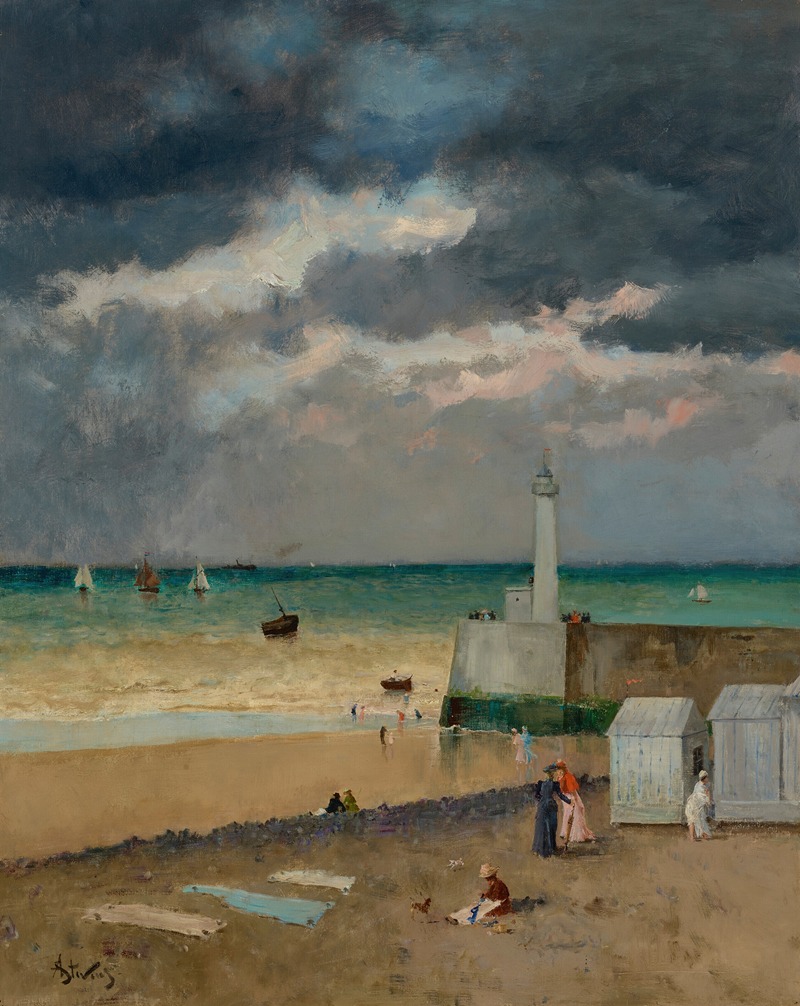
Le Tréport
A hand-painted replica of Alfred Stevens’s masterpiece Le Tréport, meticulously crafted by professional artists to capture the true essence of the original. Each piece is created with museum-quality canvas and rare mineral pigments, carefully painted by experienced artists with delicate brushstrokes and rich, layered colors to perfectly recreate the texture of the original artwork. Unlike machine-printed reproductions, this hand-painted version brings the painting to life, infused with the artist’s emotions and skill in every stroke. Whether for personal collection or home decoration, it instantly elevates the artistic atmosphere of any space.
Alfred Stevens, a Belgian painter known for his exquisite portrayal of women and interiors, created the painting "Le Tréport" during the late 19th century. Stevens was born in Brussels in 1823 and became one of the most celebrated artists of his time, particularly recognized for his ability to capture the elegance and fashion of Parisian society. His works often reflect the opulence and sophistication of the Belle Époque period.
"Le Tréport" is a notable work within Stevens' oeuvre, showcasing his skill in capturing the essence of leisure and the seaside atmosphere. Le Tréport is a coastal town in Normandy, France, known for its picturesque cliffs and vibrant seaside life. During the 19th century, it became a popular destination for the bourgeoisie seeking respite from urban life. Stevens, like many artists of his time, was drawn to such locations, which offered a blend of natural beauty and social activity.
In "Le Tréport," Stevens employs his characteristic attention to detail and mastery of light to depict a scene that is both serene and lively. The painting likely features figures engaged in leisurely activities, set against the backdrop of the sea and cliffs that define the region. Stevens' use of color and composition would have been aimed at conveying the leisurely elegance associated with such locales, a theme prevalent in his body of work.
Stevens' paintings are often celebrated for their realism and the way they capture the textures of fabric and the subtleties of light. In "Le Tréport," these elements would be expected to highlight the interplay between the natural environment and the human presence within it. His ability to render the delicate nuances of fashion and the genteel lifestyle of his subjects would be evident in the attire and demeanor of the figures depicted.
The painting reflects the broader cultural and social trends of the time, where the seaside became a symbol of modern leisure and escape. The rise of train travel made coastal towns more accessible, and artists like Stevens were instrumental in documenting this shift in societal habits. Through his work, Stevens not only captured the physical beauty of places like Le Tréport but also the spirit of an era that valued elegance and leisure.
Alfred Stevens' contribution to art extends beyond his canvases; he played a significant role in bridging the artistic communities of Belgium and France. His works were exhibited widely, earning him accolades and a prominent place in the art world of his time. "Le Tréport," like many of his paintings, would have been appreciated for its technical prowess and its ability to evoke the leisurely sophistication of the Belle Époque.
In summary, "Le Tréport" by Alfred Stevens is a testament to the artist's skill in capturing the essence of 19th-century leisure culture. Through his detailed and elegant portrayal of seaside life, Stevens offers a glimpse into the world of the bourgeoisie, set against the natural beauty of the French coastline. His work remains a valuable part of art history, reflecting both the aesthetic and social dynamics of his era.





